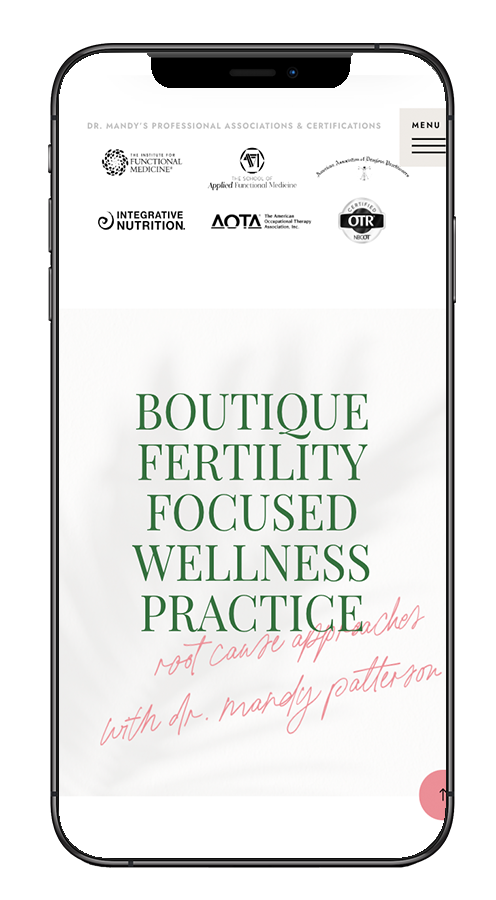If you know anything about my story, you know that I’m passionate about living stress-free. When I was a grad student getting my occupational therapy degree, and pregnant with my first, I almost let stress get the best of me. Nowadays, I’m a huge proponent of yoga as a way to pursue optimal health. Not only is yoga a great exercise, but it also has the potential to activate your parasympathetic nervous system and reduce the effects of chronic stress in your life!
In this article, you will learn all the details about the “flight or fight” response and why you need to spend time on its counterpart: “rest and digest.” We’ll go over the dangers of chronic stress and I’ll give you three ways to activate the parasympathetic nervous system with yoga!
The Autonomic Nervous System
Let’s start the discussion with a few science facts you probably learned in Biology 101. The autonomic nervous system is a component of the peripheral nervous system – meaning outside of the brain and spinal cord. It regulates involuntary physiologic processes including heart rate, blood pressure, respiration, digestion, and arousal. Honestly, it is in charge of every organ in your body except for the skeletal muscles.
There are three divisions of the autonomic nervous system: sympathetic (SNS), parasympathetic (PNS), and enteric (ENS). In this article, we are concerned with the SNS and the PNS.
Sympathetic Nervous System
You may not have heard of the sympathetic nervous system, but you’ve probably heard of the “fight or flight” response.
Activation of the SNS leads to a state of overall elevated activity and attention. That’s where the “fight or flight” response comes from. In this process, blood pressure and heart rate increase, digestion slows down, pupils dilate, among other responses. Basically, it’s a whole-body reaction affecting many organ systems. The goal is to redirect oxygen-rich blood to areas of the body needed during intense physical demand.
You’re probably most familiar with the fact that when the sympathetic nervous system is activated your body releases the hormones cortisol, epinephrine, and norepinephrine.
While our body is amazing at adapting to challenges, it somehow missed the memo that we no longer have to hunt and fight for survival. That means today the “fight or flight” response is triggered anytime our body perceives a stressful situation.
Imagine how many times you feel stress in this 21st-century world…I bet it’s a lot.
Parasympathetic Nervous System
On the other hand, the parasympathetic nervous system is the “rest and digest” response.
The PNS activates anytime you eat or experience a pleasurable activity. The physiological effects of the PNS are basically the opposite of the SNS. For example, your heart rate and respiration slow down, blood pressure drops, intestinal activity increases, and blood flow to the digestive tract increases.
Most notably, the stress hormones that are activated by the SNS also decrease through the release of the neurotransmitter acetylcholine.
The truth is, the PNS and SNS can work with each other, against each other, and for each other to maintain homeostasis. The key is about maintaining balance.
What’s the Big Deal About Stress?

Chronic stress disrupts the balance between the parasympathetic and sympathetic nervous systems. It leads to increased cortisol levels and disrupted melatonin rhythms. Chronic stress is implicated in a host of diseases both mental and physiological. It can quite literally kill you.
Like I mentioned earlier, the fight or flight response leads to heightened activity and attention. When our ancestors were out foraging for food or running from danger the SNS kept them safe. In contrast, our lives today are much more peaceful. However, that doesn’t mean we aren’t bombarded by distractions and busyness.
While the stressors of today are not life-threatening, our body takes those experiences of stress and activates the SNS just as it would have if we were running from a mammoth. Oops, right.
This leads to chronic stress.
If you are dealing with chronic stress you may experience some of these symptoms:
- Fatigue
- Headaches
- Decreased immunity
- Sleep problems
- Mood swings
- Sugar and caffeine cravings
- Irritability or lightheadedness between meals
- Eating to relieve fatigue
- Dizziness when moving from sitting or lying to standing
- Digestive distress
RELATED: BREAK UP WITH STRESS AND ANXIETY FOR GOOD
You Have Power Over Stress
To achieve optimal health, it is critical to reduce stress and thus reduce the constant activation of the SNS. The good news is that research shows that the state of stress itself can be conserved and maximized through self-reinforcing negative and positive feedback processes. In short, you have power over stress!
For example, if you deem the stressor to be a threat or harm that exceeds your resources, this determination initiates the acute stress reaction. The result may be stereotyped, habitual defensive behavior, or coping responses intended to preserve the integrity of the self – that means chronic stress.
On the other hand, successful navigation of the stressor tends to resolve the acute stress state!
Three Ways Yoga Activates the Parasympathetic Nervous System

To achieve optimal health, it is critical to reduce stress and thus reduce the constant activation of the SNS. By doing yoga, the stress hormones that are activated by the SNS decrease through the release of the neurotransmitter acetylcholine.
One way to successfully navigate stressful situations in life is through activating the parasympathetic nervous system through YOGA. Not only does it balance out the activation of the SNS, but it also gives you time to rest and relax.
Here are three ways yoga activates the PNS:
Slow Breathing
Just making your breath conscious can activate the “rest and digest” PNS. In most yoga practices, we start by sitting and bringing the focus into our breathing pattern. To do this, slowly draw your attention to your breath and try to make it fully conscious. Follow how you draw in the breath and how you let it go. Travel deeper down in the abdomen and slow it down concentrating on a little pause between the inhale and exhale. Once you have taken at least three rounds you will have activated the PNS.
Restorative Yoga
Techniques and practices, including Pranayama, Kapalabhati, Analoma Viloma, and Brahmaris, help activate the PNS. When practicing yoga, the SNS is encouraged to give up and the PNS takes over to encourage the rest we need to be healthy. In restorative yoga sessions, we soothe and alternately stimulate the organs helping the absorption and flow of nutrients. We also have time to concentrate on the present and not any future stressors by slowing down the brain wave patterns.
Guided Imagery & Meditation
As mentioned earlier, you actually have the power to help your body perceive stress as beneficial rather than negative. Mindfulness and meditation can both help the brain relax and activate the PNS. For example, by consciously changing thoughts to positive, taking stock, and using the conscious breath method, the PNS once activated, does all in its power to bring well-being.
Work With A Holistic Health Coach
Are you ready to take back your health? As a Certified Holistic Health Coach, I help women find their vision of optimal health through diet and lifestyle medicine.
Mandy Patterson

















